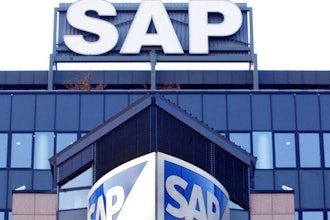
 Steve Smith
Steve SmithFor decades, the American manufacturing industry was the backbone of the country’s economy. But emerging technology has disrupted the sector to a degree where it’s struggling to stay afloat. Manufacturing is a labor-intensive industry with narrow margins that lags behind many other verticals in terms of technological innovation, resulting in a less than optimal degree of efficiency and cost benefit. The overall economy is against American manufacturing, too. The strength of the dollar, cheap overseas labor and an uneasy political climate contribute to the sector’s challenges.
Business models also have shifted. These days, every business function needs to be able to show not only the ability to add value currently, but also the capability to scale in order to continue to contribute to the success of a company in the future. For manufacturing and supply chains, the opportunities to contribute value are more indirect than that of product design or even marketing. Instead, these departments must continually streamline production and delivery, improve customer service capabilities and establish efficient, accurate business processes in order to have a significant value on OpEx. All stakeholders — customers, vendors and interdepartmental workers — need flexibility, transparency and speedy results.
The Capabilities of Cloud
Until the advent of cloud computing, manufacturing and supply chain functions were limited in terms of the amount of innovation they could implement in order to increase their value to an organization. But the fast, flexible, “on-demand” nature of the cloud enables innovations in collaboration, communication, workflows and customer service that are serving to once again raise these functions to the top of the value chain. Shop floors and supply chains can implement dynamic solutions that can constantly be analyzed and reconfigured to optimize cost, efficiency and quality.
In particular, there are distinct advantages to using cloud technology to automate document-heavy workloads in order to increase business productivity, optimize costs and provide real-time visibility. Cloud-based document process automation is oftentimes more affordable than on-premises operations. It’s flexible enough to connect to any ERP and can enhance a wide variety of business process solutions such as sales order processing, invoicing, accounts payable and so forth. Cloud enables “pay as you go” models that allow organizations to scale their use according to business needs. Perhaps most significant, moving workloads to the cloud simplifies IT infrastructure and reduces the need for complex on-prem solutions and associated large IT teams.
Direct Benefits of Cloud-Based Automation
The competitive advantages of cloud-based document process automation are significant. When shop floors and supply chains are automated, levels of transparency increase dramatically. The result is predictable and reliable delivery, significant reduction in data entry errors and increased visibility into inventory. By running automation processes in the cloud, it’s easier for organizations to connect systems and analyze large batches of data in order to better forecast demand cycles, identify potential issues and ensure customer satisfaction.
Cloud solutions are extremely flexible, too. Although the cloud is generally quite secure, some organizations may prefer a hybrid model, keeping workloads associated with sensitive data on-prem or in a private cloud while hosting transaction-heavy processes in a public cloud. The beauty of the cloud lies in its scalability and flexibility, which enable dynamic management of manufacturing and supply chain processes. If the market environment shifts or the organization’s business strategy changes, cloud computing gives the ability to adjust quickly and with minimal disruption.
Collaboration and Communication
One of the hottest enterprise IT sectors is business collaboration solutions, the most convenient and effective of which are only possible because of cloud and automation. This includes both internal collaboration and that with customers and suppliers. Via the cloud and automation technology, stakeholders can easily contribute to the flow of materials, information and currency.
Rather than amassing a large “safety stock” of inventory, visibility into material flows lets supply chains order and supply on demand. A sales order can move from customer service to warehouse management to accounts receivable at greatly increased speeds, allowing real-time insight into financials and more accurate forecasting. And if operations encounter a snag or unexpected issue, the ability to collaborate between departments, vendors and customers can save companies significant revenue by enabling a speedier resolution.
Customer-Driven Innovation
At the end of the day, manufacturers must create value for customers. A hallmark of cloud solutions is that they are largely driven by customer demands for low-touch, transparent, fast transactional processes. Supply chain and customer service managers can track customer needs in real time in order to catch potential problems before they arise and more quickly respond to routine requests. And if market demand changes, the cloud provides the flexibility to align with new partners or adopt new platforms in order to meet customer needs.
In the “as-a-service” economy, traditional commodities have become services. Savvy manufacturers no longer simply churn out a product to fulfill a sales order; such business models carry intrinsically narrow margins and are quickly becoming obsolete. Cloud technology lets organizations turn their resources and capabilities into professional services that generate ongoing revenue and lasting business relationships. Using advanced analytics powered by automation and machine learning, supply chain managers can anticipate customer needs and even identify opportunities for upselling or cross-selling products and services.
For most businesses, these advanced systems require the massive compute and storage capabilities of an AWS or Microsoft Azure. The amount of data needed to build an effective knowledge base and implement auto-learning capabilities is vast — in most cases, too vast to be housed on-premises.
Incidentally, the benefits of leveraging cloud and automation to operate in a services model don’t only apply to customer relationships. Trades between suppliers also morph from simple buyer-seller partnerships into robust service-oriented relationships that enable continuous improvement in the identification of cost-effective purchasing opportunities.
The Brave New World of Manufacturing
In the past, core functions were siloed, business processes were manual and slow and decisions made on the shop floor or in the supply chain were based on incomplete information. Cloud and automation technology has changed all of that, giving manufacturers new revenue-generating capabilities. These platforms increase efficiency and transparency while encouraging all stakeholders to collaborate in the decision-making process, resulting in a services-oriented business model that generates larger profit margins and longer-lasting business relationships. The shop floor and the warehouse are no longer static lines on annual budgets. They’re areas of dynamic innovation that are changing the way organizations orient their business models and strategize for future success.
Steve Smith is U.S. chief operating officer at Esker.























